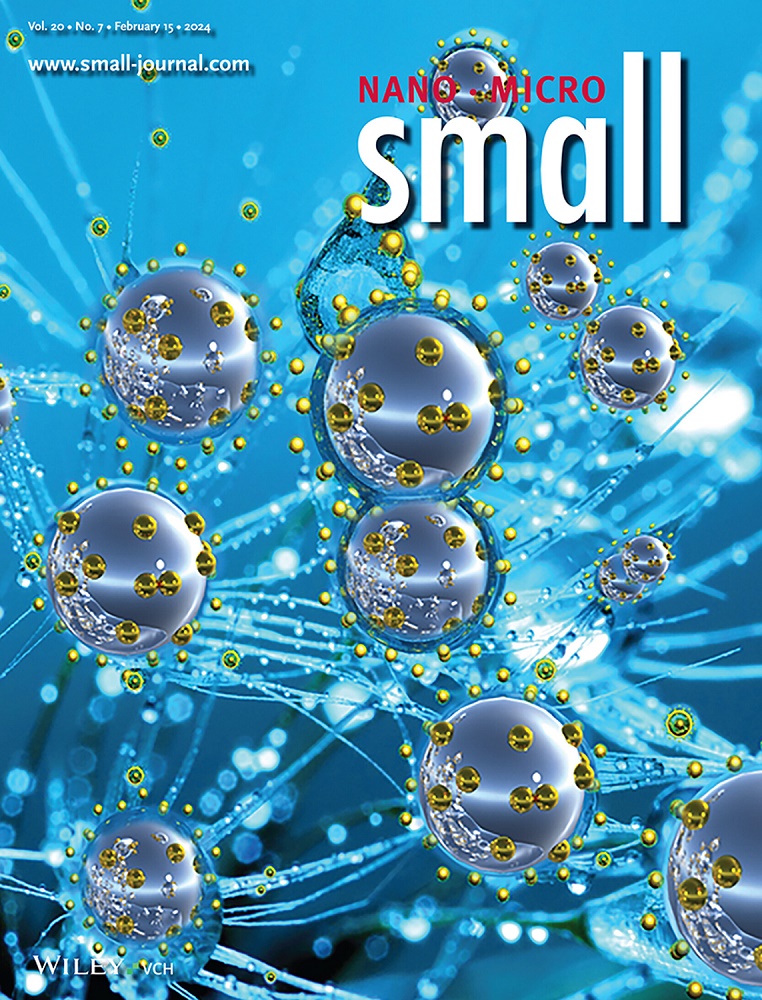Controlling Nanonet Morphology via Residue‐Specific Modulation of β‐Hairpin Peptide for Enhanced Bacterial Trapping
IF 13
2区 材料科学
Q1 CHEMISTRY, MULTIDISCIPLINARY
引用次数: 0
Abstract
Precise control over peptide nanonet architecture is instrumental in advancing the development of antibacterial nanonets. Here, a novel design strategy is presented to control bacteria nanonet morphology through rational modification of the β‐hairpin side strands, leveraging the unique chemical properties of amino acid side chains. By fine‐tuning both the termini and aromaticity of the hydrophobic residue, the W‐W通过β发夹肽残基特异性调节控制纳米形态以增强细菌捕获
对肽纳米网结构的精确控制有助于抗菌纳米网的发展。本文提出了一种新的设计策略,利用氨基酸侧链独特的化学性质,通过合理修饰β -发夹侧链来控制细菌纳米形态。通过微调疏水残基的末端和芳香性,W - W13肽被设计成在细菌表面形成更多的纳米纤维交织,形成一个紧密交织的纳米网络,有效地捕获和杀死大肠杆菌和金黄色葡萄球菌。相反,在E - E13ASYM肽的阳离子残基上的不对称谷氨酸取代使纳米纤维重新定向到自交织,形成广泛的纳米纤维,细菌覆盖最小,没有抗菌活性。利用这些具有不同形态和功能的纳米网,研究人员证明,在细菌表面形成紧密交织的纳米网可以显著减少活动大肠杆菌和铜绿假单胞菌的传播,优于松散捕获纳米网和传统的强效抗生素。这一发现为开发新型基于肽的纳米网络铺平了道路,提供了一种有前途的策略来靶向细菌的运动和防止细菌的传播。
本文章由计算机程序翻译,如有差异,请以英文原文为准。
求助全文
约1分钟内获得全文
求助全文
来源期刊

Small
工程技术-材料科学:综合
CiteScore
17.70
自引率
3.80%
发文量
1830
审稿时长
2.1 months
期刊介绍:
Small serves as an exceptional platform for both experimental and theoretical studies in fundamental and applied interdisciplinary research at the nano- and microscale. The journal offers a compelling mix of peer-reviewed Research Articles, Reviews, Perspectives, and Comments.
With a remarkable 2022 Journal Impact Factor of 13.3 (Journal Citation Reports from Clarivate Analytics, 2023), Small remains among the top multidisciplinary journals, covering a wide range of topics at the interface of materials science, chemistry, physics, engineering, medicine, and biology.
Small's readership includes biochemists, biologists, biomedical scientists, chemists, engineers, information technologists, materials scientists, physicists, and theoreticians alike.
 求助内容:
求助内容: 应助结果提醒方式:
应助结果提醒方式:


